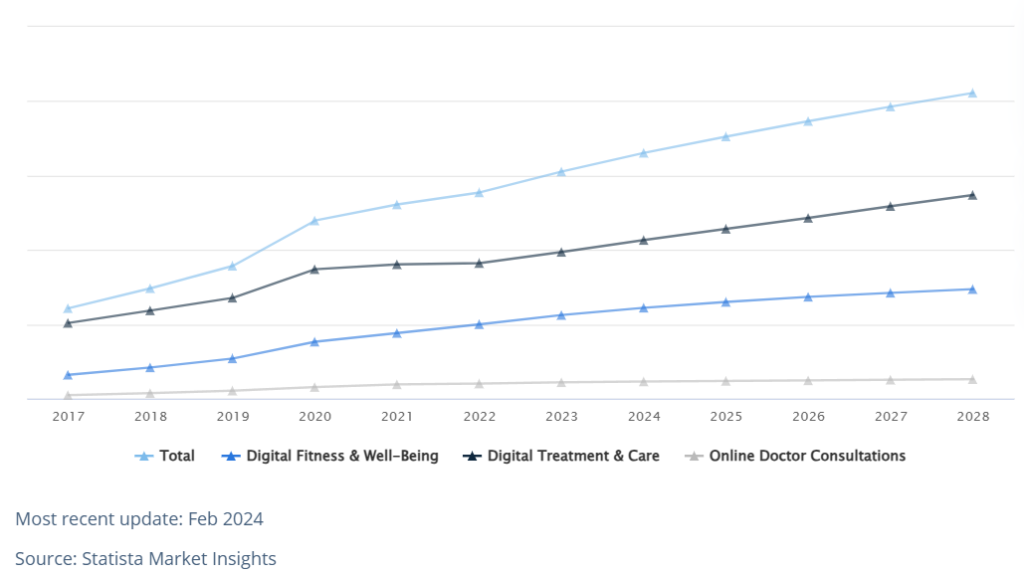Cambodia Digital Health Market Overview: Revenue and Consumer Trends
Cambodia’s digital health market is undergoing a transformative period, poised for significant expansion and innovation. With a projected revenue of US$108.30 million in 2024 and a compound annual growth rate (CAGR) of 10.88% from 2024 to 2028, the market reflects a growing trend among Cambodian consumers towards digital health solutions. This shift is driven by several factors, including the convenience and accessibility offered by such technologies, especially in areas with limited access to traditional healthcare services. For stakeholders and investors, particularly those involved in Cambodia healthcare consulting, these insights are crucial for understanding market dynamics and identifying potential areas for investment and development within the Cambodian digital health landscape.

One of the key drivers of this growth is the increasing demand for remote doctor consultations and digital treatment alternatives. Cambodian consumers, faced with the demands of their daily lives and the challenges of accessing conventional healthcare services in specific areas, are turning to telemedicine and digital platforms for medical guidance and treatment. This trend is reshaping the healthcare landscape in Cambodia, impacting the utilization of traditional services and fostering the growth of digital health solutions.
By 2028, the digital health market volume in Cambodia is expected to reach US$163.70 million, reflecting a robust upward trajectory driven by the adoption of digital health solutions among Cambodian consumers. The average revenue per user (ARPU) of US$23.57 further indicates the growing acceptance and utilization of digital health technologies across the country.

One significant area experiencing increased demand is the digital fitness and well-being sector, with a projected total revenue value of US$78.04 million in 2024. As Cambodian consumers prioritize their health and seek ways to remain active and monitor their well-being, online platforms and apps offering fitness guidance and wellness monitoring are gaining popularity. This trend is particularly pronounced in rural regions where access to traditional healthcare services is limited, leading to a greater reliance on digital platforms for healthcare needs.
Moreover, telemedicine services are becoming increasingly common, allowing individuals to consult with healthcare professionals remotely. The digital treatment and care sector is also growing, with the adoption of remote monitoring services and digital platforms tailored for chronic condition management.
Cambodia’s digital health market is shaped by various local factors, including the increasing penetration of smartphones and internet connectivity. This widespread technological access is driving the adoption of digital health solutions among Cambodian consumers, enabling them to engage conveniently with healthcare services online.
Government initiatives and policies promoting telemedicine and digital healthcare platforms are further accelerating market growth and fostering innovation. Economic growth and rising disposable incomes in Cambodia are also contributing to the demand for convenient and affordable healthcare solutions, with the COVID-19 pandemic acting as a catalyst for the adoption of digital health technologies.
Cambodia’s Digital Healthcare Market Outlook
While Cambodia’s digital health market is smaller in scale compared to global leaders like China—which is expected to reach a revenue of $53.07 billion by 2024—it offers substantial opportunities for growth and innovation, particularly post-pandemic. The trends indicate a durable shift towards digital health solutions that are likely to continue expanding access to healthcare services across the country. For investors and professionals involved in Cambodia healthcare consulting, understanding these shifts is crucial for navigating investment opportunities and fostering innovation in a dynamic market poised for significant impact in post-pandemic healthcare delivery.
